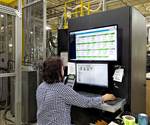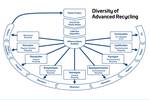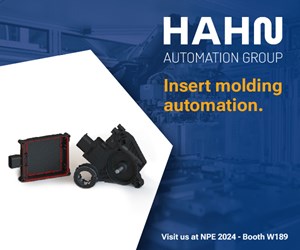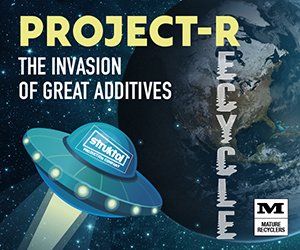Nanopowder Screw Coating for High-Wear Applications
Coating option for tops of feedscrew flights also showcased.
At K 2022 in Düsseldorf, Extreme Coatings debuted 9000 SF nanopowder 900 SF, which has been redesigned to combat extreme application of fine particle abrasion. The new 9000 SF nanopowder targets near micron and sub-micron composition size, which is smaller than current formulas. The material particle size has been reconstructed to further enhance wear. Testing shows 9000 SF provides a 20% increase in wear versus the standard 9000 product.
Extreme Coatings also took the wraps off its FliteGuard coating option, which protects the top of feedscrew flights with a layer of wear-resistant tungsten carbide. The coating can improve screw life from three- to ten-fold compared to standard hard facings. FliteGuard is also more affordable, providing a 30% cost reduction for coating of cap flights. Contrary to industry belief, FliteGuard tungsten carbide coating can run in a softer nitride barrel due to a key process advancement.
The standard coating thicknesses are 0.005 in. (0.125 mm) for screws of dia 36 mm and below, and 0.010-in. (0.25 mm) for larger feedscrews. Low heat input during the coating process ensures no post-coating stress relief or straightening is necessary.
The FliteGuard process is also an option to replace a small amount of wear on tool steel feedscrews. Most tool steel screws do not suffer from root- or flight-side wear, but eventually adhesive wear reduces their diameter. Tool steels can’t be weld repaired due to the alloy content of the screw, but the application of up to 0.020-in. (0.5 mm) FliteGuard coating to the tops of flights can reportedly return a worn screw to like-new condition.
Related Content
-
How to Configure Your Twin-Screw Extruder: Part 3
The melting mechanism in a twin-screw extruder is quite different from that of a single screw. Design of the melting section affects how the material is melted, as well as melt temperature and quality.
-
How to Configure Your Twin-Screw Barrel Layout
In twin-screw compounding, most engineers recognize the benefits of being able to configure screw elements. Here’s what you need to know about sequencing barrel sections.
-
The Path to Pellet Perfection
In underwater pelletizing, numerous variables in the equipment, process and material affect pellet shape, consistency and quality factors such as fines. Defining the “perfect” pellet depends on the conditions of end use, and achieving that ideal requires understanding of the causes of imperfections.





.png;maxWidth=300;quality=90)






